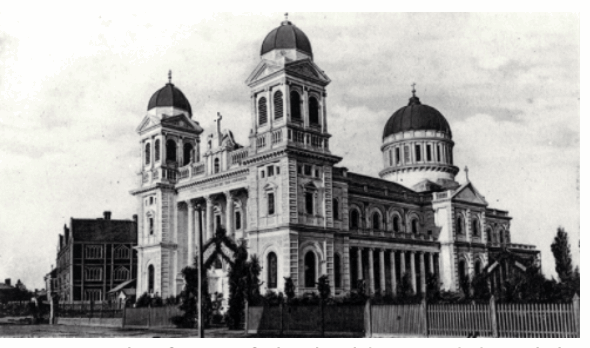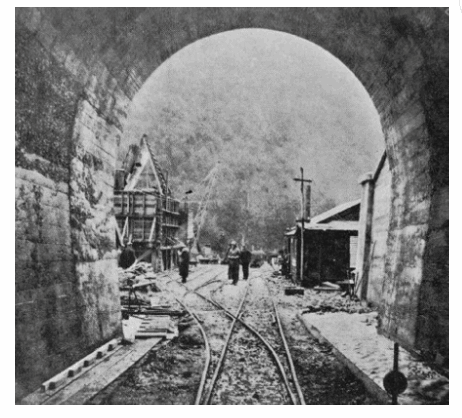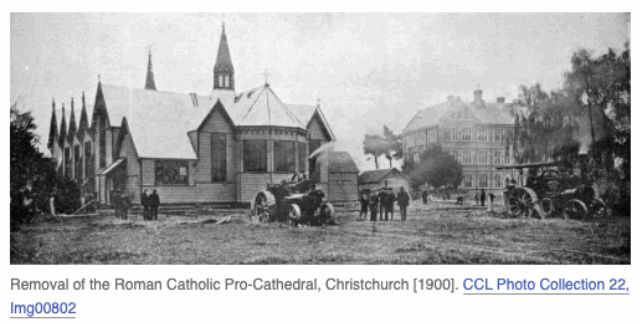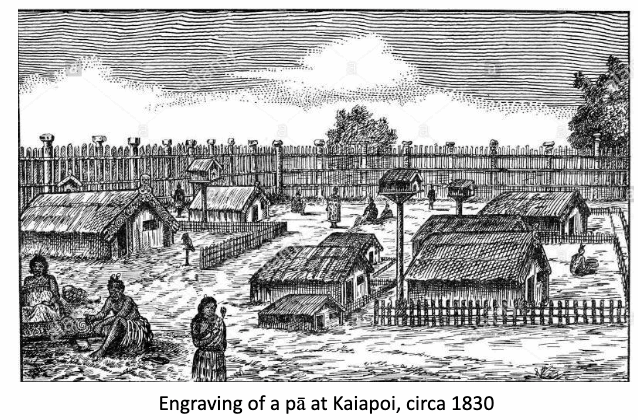
OUR HISTORY
Our cultural history describes what is unique about our College. The Te Reo name gifted to the College is Te Waka Whakapono, literally, the Faith Waka/Boat. Catholic Cathedral College is located within the takiwā of Ngāi Tūāhuriri, the primary hapū Ngāi Tahu who hold mana whenua over Christchurch City, in an area centred on Tuahiwi in North Canterbury and extending from the Hurunui River to the Hakatere/Ashburton River and inland to the Main Divide.
The traditions of Waitaha, Ngāti Māmoe and Ngāi Tahu were embedded in the landscape by Ngāi Tahu over an 800-year period. Since 1830, Ngāi Tahu have welcomed all people to our lands and held true to the values instilled in the proverb, ‘kia atawhai ki te iwi’ / ‘Care for the people’. This whakataukī was expressed about the settler population in Christchurch by Pita Te Hori, the first Ūpoko Rūnanga of Ngāi Tūāhuriri in 1861. This founding kaupapa was laid by Tūāhuriri, the ancestor after which the hapū of Ngāi Tūāhuriri takes its name. Today, Ngāi Tūāhuriri continue to uphold these values when welcoming all those who now call Ōtāutahi/Christchurch home — no matter where you have come from.
In historical times the large network of waterways, wetlands and swamps now home to Christchurch City was rich in food and other resources for Ngāi Tahu and their predecessors. Permanent or semi-permanent pā and kāinga were erected on areas of higher, drier ground most notably at the Barbadoes Street bridge (Te Pā o Tautahi, the Ngāi Tahu chief whose name is part of the now commonly accepted Māori name for Christchurch- Ōtāutahi) and a pā called Puari (Market Place / Victoria Square).
Catholic Cathedral College is located at the city end of the Ferry Road corridor. In historical times this was one of many significant travel routes linking permanent or semi-permanent Māori settlements in the now city area, to the Ōpawaho/Heathcote River and adjoining Ihutai/Avon-Heathcote Estuary. The area has a rich history and remains of vital importance for Ngāi Tūāhuriri culture, values and practices including mahinga kai (food gathering) of shellfish, eels, fish, plants and birds. The Ferry Road corridor also linked with the tracks which lay between the largest pā of Ngāi Tahu to the north, in Kaiapoi; to kāinga on Horomaka (Banks Peninsula) and around to Te Waihora (Lake Ellesmere) and the Rāpaki Track, the then principal route from the plains to Whakaraupō (Lyttelton Harbour).
Following organised European settlement in the 1850s and 1860s, wharves along the Ōpawaho/Heathcote River were used by small ships to service the burgeoning town of Christchurch. Before the Lyttelton Rail Tunnel was opened in 1867, all the incoming trade arrived in Ferrymead and was transported through Woolston (along Ferry Road) into Christchurch.
In the 1850s due to labour shortages the longstanding opposition to immigration of Irish Catholics was abandoned and Irish Catholics quickly came to make up a significant proportion of the working class in Christchurch. In 1857 the Crown allotted the Catholic Church a plot of land at the corner of Ferry Road and Barbadoes Street, at the heart of the Irish working-class suburbs, in order that the recently arrived Marist missionary priests could begin serving their spiritual needs.
A chapel and a modest parsonage opened on the Barbadoes Street site in 1860, although the land was low-lying and initially poorly drained and subject to flooding. Over time the city’s drainage improved. A beautiful gothic wooden Church of the Blessed Sacrament, designed by Benjamin Mountfort was built in 1864, replacing the original chapel.
Forty-five years later, on 12 February 1905, the architecturally impressive Cathedral of the Blessed Sacrament was opened on the same site. The Cathedral was closed after the 4 September 2010 Canterbury earthquake. The February 2011 Christchurch earthquake collapsed the two bell towers at the front of the building and destabilised the dome. Partial demolition was undertaken at that time, and a decision to completely demolish the Cathedral was made public on 4 August 2019, with demolition work completed in mid-2021. A new Cathedral will be built on a new site in central Christchurch at a later date.
Although the Barbadoes Street/Ferry Road site is the historical home of Catholic education in Christchurch, the very first Catholic school in the city was established by a newly arrived young Irishman, Mr Edward O’Connor who on May 3rd 1865, opened the first Catholic school in Christchurch in a cottage on Lichfield St with just two pupils. However, money was quickly raised to purchase land on Barbadoes Street next to the Church of the Blessed Sacrament and the O’Connor school shifted there in October 1865 with 86 pupils.
In 1868 the Sisters of Our Lady of the Missions established Sacred Heart School for girls on the Ferry Road side of the Church. In 1880 the first Catholic secondary school for girls, Sacred Heart College, was opened on the same site.
Mr O’Connor’s school, St Patrick’s, based on the Moorhouse corner of Barbadoes Street continued under his principalship until 1888 when the first Marist Brothers arrived. The school then became known as the Marist School. The Marist School continued to educate the Catholic boys of Christchurch, but was not formed into an exclusively secondary school until the opening of Xavier College in 1945, at the request of Bishop Lyons.
Sacred Heart College and Xavier College continued to operate as single-sex high schools side by side until the two schools amalgamated to form Catholic Cathedral College in 1987.
Today Catholic Cathedral College takes on the role of Kaitiaki of this early and important history of Catholicism on the Barbadoes Street/Ferry Road site and as proclaimed in its College motto, will continue “to live by faith”, cherishing its long traditions, as it prepares its students for the diverse, inclusive and exciting future of New Zealand. As the only co-educational high school in Christchurch it is able to serve families across the entire greater Christchurch area.







KŌWHAIWHAI
The College Kowhaiwhai is developed from the traditional pattern known
as Ngaru, which depicts the cutting of the waves as the waka travels. This Kowhaiwhai reflects the forward movement of our waka of faith – ‘Te Waka Whakapono’, with the added inclusion of the Cross to represent Te Atua.
The red is a traditional colour in Kowhaiwhai. Here, it represents the Blood of Christ, through which our sins are absolved. The blue of the background symbolises heavenly grace, hope, good health, and the giving of service. Blue is also traditionally the colour of Mary, who both of our founding orders have as their inspirational and spiritual model. The colours also connect our two original schools – the red of Sacred Heart and the blue of Xavier.
The Kowhaiwhai was created for the College by Jeremy Willis, of Kāti Waewae descent. This is a West Coast hapū of Ngāi Tahu based at the Arahura River. He married into Te Atiawa Puketapu hapū, and has connections to Te Atiawa and Ngāti Maniapoto through Jan Wikaira, his whāngai mum. As a young person, Jeremy was guided by Ngāti Porou kaumātua, Akuhata Manuel, and his wife Patsy.

KOROWAI
Korowai are the most highly prized of all traditional Māori garments. Through funding awarded by the Red Cross Earthquake Fund in 2013, we obtained our College Korowai. Our school Kowhaiwhai features prominently on both of the korowai. The red in it signifies Sacred Heart and the Blood of Christ, the royal blue illustrates Xavier College, and the Veil of Mother Mary. The white represents purity. The whakapapa of the design is the coming together of two schools, Sacred Heart and Xavier College, and the wake of a waka
on its journey to Heaven. There is a Cross in the middle of the design, representing our Catholic faith.
The male korowai has red coming down from the Kowhaiwhai, representing the Blood of Christ, and symbolising power and sacredness in Te Ao Māori. The natural feathering was then chosen as the bulk of the cloak to keep the korowai traditional.
The female korowai features white feathers, replicating the rare white albino kiwi feathers, which are seen as very prestigious, also signifying purity. The lighter feathers then return to the same traditional feathering that is on the male cloak. Flecks of red feature on the female cloak as well, again representing the Blood of Christ and symbolising powerand sacredness.

COLLEGE WAIATA
Our College Waiata (song) was composed by Richard Puanaki, Ngāti Kahungunu, (1940–2023), an ex-teacher and exceptionally gifted and generous musician, composer, scholar, educational and cultural leader. Richard has been described as being a shining light in the Māori Catholic Church. He composed many himene and songs, with the most famous being ‘Ka Waiata ki a Maria’. The composition is now used Nationally throughout Catholic schools and Miha (Masses).
Our College waiata (song) is a reflection of who we are as a faith community. It celebrates our values, our connection to the land, and the shared journey of students, staff, and whānau. Through its lyrics and melody, the song expresses pride in our heritage, honours the story of our place, and strengthens our collective identity and spirit. It reflects our coming together as one College from two, Sacred Heart College and Xavier College. It was composed in te reo Māori and is always sung in te reo Māori to acknowledge the tangata whenua of our land, affirming our respect for Māori language and culture. This waiata refers to the kaupapa (the philosophical foundation) of the College, namely its connection to the Church (wharetapu), it’s people (tangata), spirituality (wairua), making connections and focusing on spirituality, people and achievement. It speaks of the coming together of the two schools and celebrates that today we stand joined as one.
Kaea: Ko te kura o te waka Whakapono
Mau tonu e
Mau tonu ki te mana a te wharetapu e
Kaupapa tāngata e
Kaupapa wairua e
Kaupapa hei hono
Kaupapa hei tutuki e
Kaea:I te wā
I te wā i te tīmatanga e
Ngākura e rua
Ka haere taki rua e
Tī, tī, tī ha, Tī, tī, tī ha
He kura taitama e
He kura tamāhine e
I tēnei rā ko tātou tātou e
Kaea: I tēnei rā
I tēnei rā ko tātou tātou e
TAHI RUA TORU WHĀ KISI AUE HI!

COLLEGE CREST AND MOTTO
The College crest is based on the distinctive shape of the Cathedral dome.
The capital letter “C” which forms its base represents the name Catholic Cathedral College.
The small cross signifies its special character as a Catholic college, and the tongue of fire represents the flame of faith Christians keep alive in their hearts.
The flame, as well as the motto, “To Live By Faith”, were taken from the Coat of Arms of the late Bishop Denis Hanrahan, sixth Bishop of Christchurch, whose initiative led to the amalgamation of Sacred Heart College and Xavier College in 1987.
Crest designed by Mgr. James Harrington

COLLEGE HOUSES
When Catholic Cathedral College was established, four Houses were created to reflect the legacy of the founding Orders and the significant individuals who helped shape the College's beginnings. Every student is placed into one of these four Houses upon enrolment and remains part of that House throughout their time at the College.
House spirit is a vibrant part of school life, nurtured through a range of competitions held across the year. These include the inter-House Haka, Chant, Athletics Day, and Book Week, with points contributing toward the title of overall House champion. A highlight of the year is the College’s Feast Day, celebrated on the Feast of Corpus Christi, which features one of the most spirited and widely anticipated House competitions. This commemorates the Founders of our College. On this special day, each House competes in the performance of a himene and a musical item, celebrating unity, creativity, and the rich traditions of our community.
HAPORI: At Catholic Cathedral College, our Catholic Special Character is central to all that we do. It shapes our identity, guides our relationships, and inspires our approach to teaching and learning. In 2019 the four College values are Manaakitanga, Whanaungatanga, Panekiretanga, and Whakapono were co-constructed with the College community. These values provide a strong foundation for building a culture where every person is valued, supported, and empowered to thrive.
In te reo Māori, Hapori means community. At Catholic Cathedral College, Hapori reflects our deep commitment to whanaungatanga, nurturing strong, supportive relationships across all levels of our school. It expresses the sense of belonging, care, and connection that shapes the everyday experience of our students.
All students are allocated to one of four Houses and placed into a pastoral group known as a Hapori, alongside other students from their House. Each House is made up of seven Hapori groups, including a dedicated Year 13 Hapori. The remaining six groups are vertical, including students from Years 7 to 12. This structure fosters tuakana-teina relationships, where older students support and guide younger ones, building unity and leadership across year levels.
Wherever possible, we keep siblings in the same House to strengthen whānau connections within our school. Students typically remain with the same Hapori teacher throughout their time at the College. This consistency allows for meaningful pastoral relationships to form, enabling teachers to walk alongside each student in their personal, academic, and spiritual journey.
Year 13 students are grouped in a separate Hapori to support their final year of leadership and growth. This structure provides space for mentoring, faith development, personalised pathway planning, and preparation for life beyond school as they step into the wider world with confidence and purpose. At times throughout the year, they will return to their Year 7 - 12 Hapori as a tuakana.
Each House is led by a House Dean (overall House Lead) and a Kaiārahi House. The Kaiārahi House leads all House activities and is the Year 13 Hapori teacher. They are supported by student House Leaders and Hapori teachers, creating a caring, well-connected pastoral team focused on student wellbeing, formation, and House spirit.


THE GREAT EIGHT | THE OARS/HOE OF TE WAKA WHAKAPONO
At Catholic Cathedral College, The Great Eight are symbolised as the oars (hoe) of the waka, representing the driving forces that propel our faith journey forward. These eight elements of our charisms are the foundational spiritual gifts and guiding principles inherited from our founding religious orders: the Marist Brothers and the Sisters of Our Lady of the Missions (RNDM).
The Marist Brothers were founded by Saint Marcellin Champagnat in 1817 in France. His mission was to educate and care for young people, especially the most vulnerable, in a spirit of humility, simplicity, and family.
The Sisters of Our Lady of the Missions (RNDM) were founded by Euphrasie Barbier in 1861, also in France. Her charism focused on mission, education, and the empowerment of women and girls through Gospel-centred service and a global vision.
Together, these two religious congregations brought with them unique charisms that continue to shape the spirit and identity of Catholic Cathedral College. From the Marist tradition, we inherit five pillars: Presence, Simplicity, Family Spirit, Love of Work, In the Way of Mary
From the Mission Sisters, we embrace the charisms of: Contemplation, Community, Mission
Combined, these Great Eight guide our actions, inspire our learning, and anchor our Catholic Special Character. They are the oars of Te Waka Whakapono, the waka of faith, with Jesus Christ at the helm, steering us forward in unity, purpose, and service. It is through Him that we are guided in all we do, as we seek to grow in faith, knowledge, and love.


The actual patronal feasts of the RNDM Sisters are The Visitation, May 31 and Pentecost. Pentecost is celebrated on the 50th day of the Easter season, which falls on a Sunday.


62 Ferry Road, Christchurch
PO Box 10-255, Christchurch 8145
Phone: (03) 982 1690
Email: admin@cathcollege.school.nz
SIGN UP TO RECEIVE THE LATEST CATHOLIC CATHEDRAL COLLEGE NEWSLETTER
FOLLOW US


 Admin Login
Admin Login